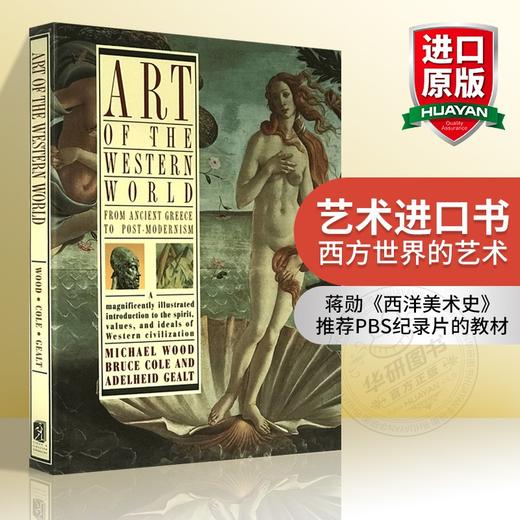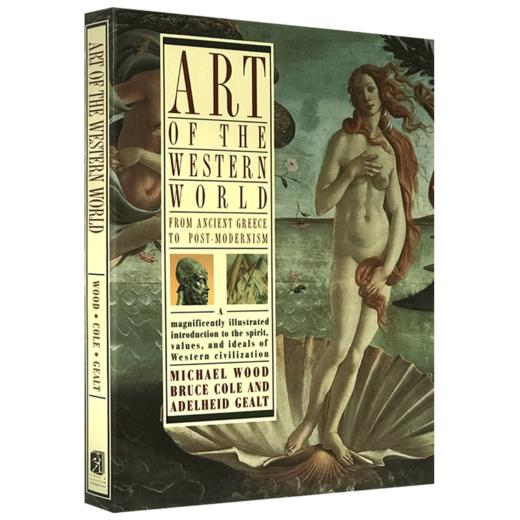艺术进口书 西方世界的艺术 英文原版 Art of the Western World 从古希腊到后现代主义 全英文版
| 运费: | ¥ 0.00-999.00 |
| 库存: | 9 件 |
商品详情
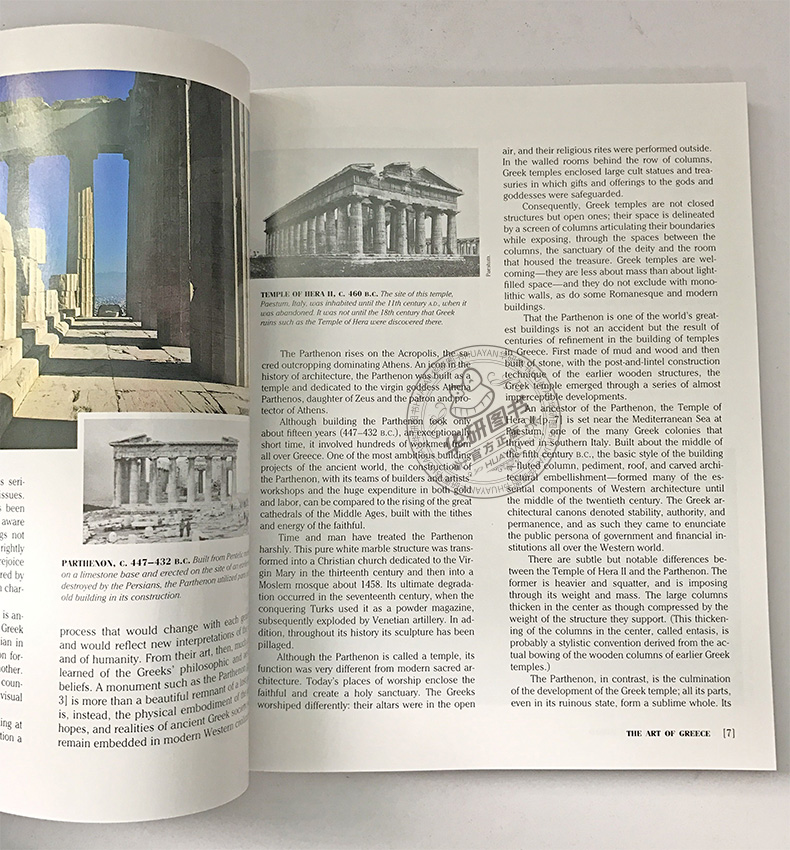
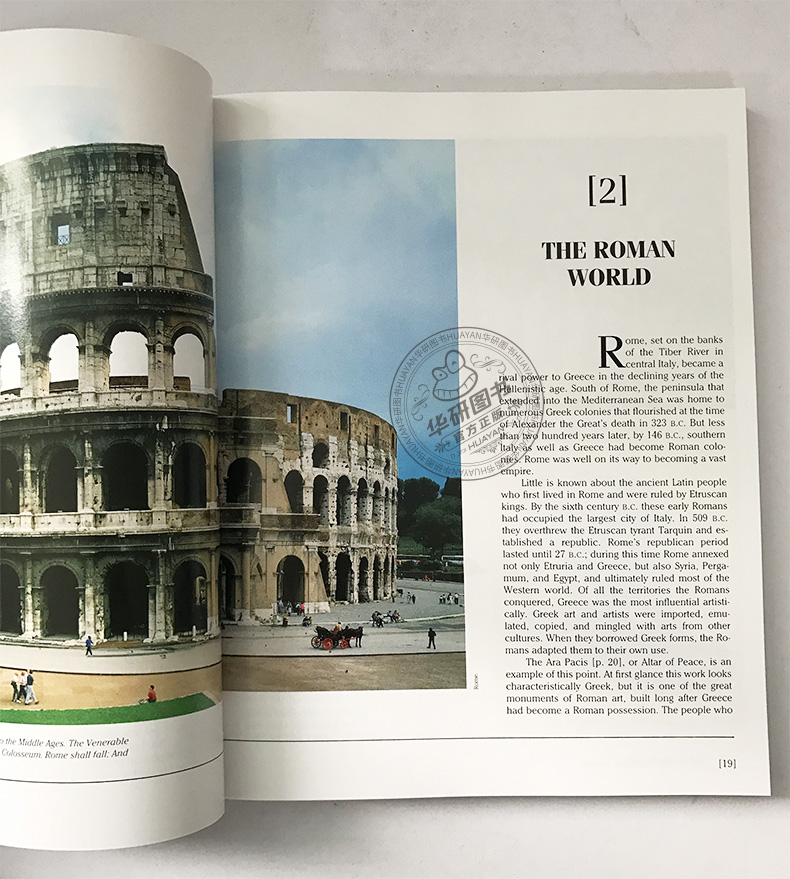
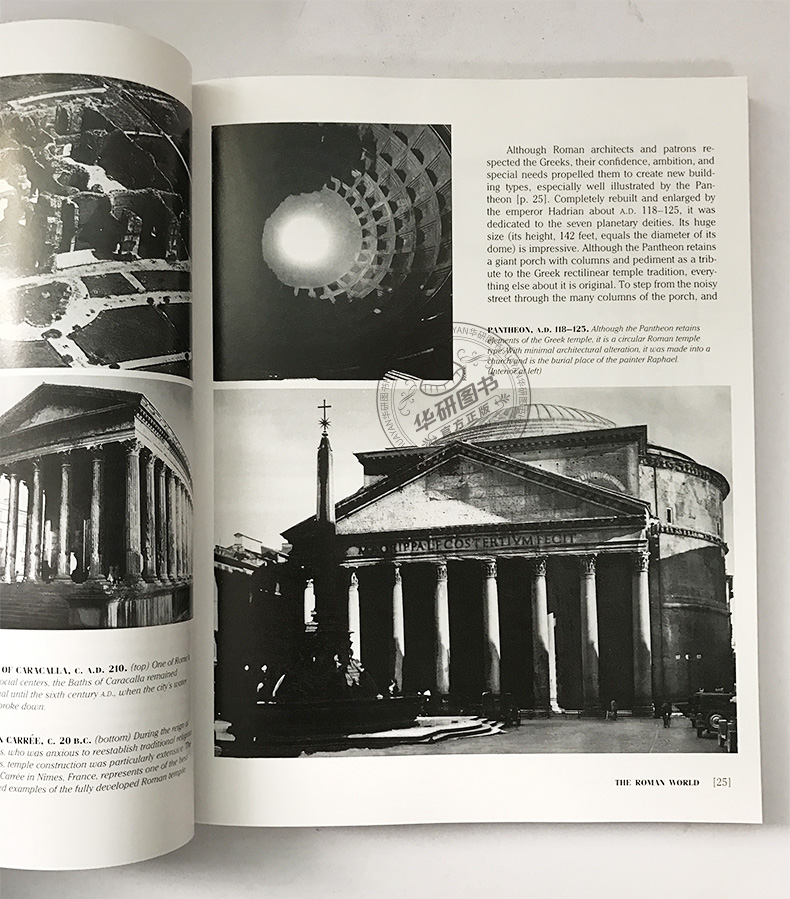
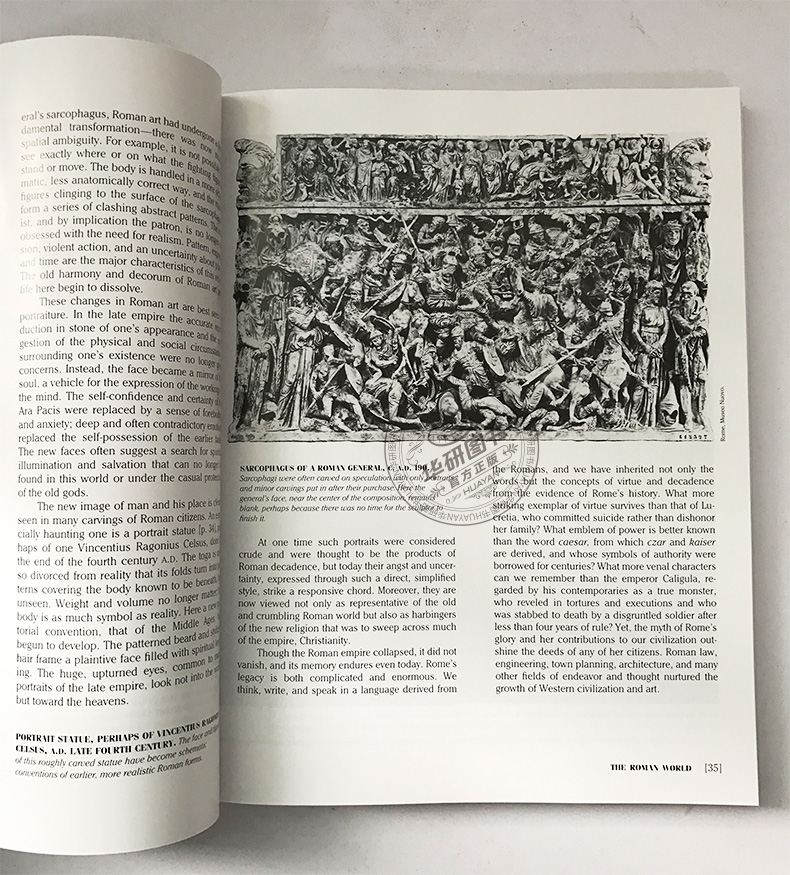

书名:Art of the Western World: From Ancient Greece to Post Modernism 西方世界的艺术:从古希腊到后现代主义
作者:Bruce Cole
出版社名称:Simon & Schuster
出版时间:1991
语种:英文
ISBN:9780671747282
商品尺寸:20.3 x 2 x 25.4 cm
包装:平装
页数:368 (以实物为准)

Art of the Western World《西方世界的艺术》是PBS所拍摄的9集纪录片的补充教材。这套9集纪录片信息量巨大,辞藻典雅优美,逻辑铺排清晰,主次重点拿捏得当。从海量几千年的西方艺术史中浓缩了9小时的视频内容,介绍了从古希腊到后现代主义上百位对西方艺术具有很大影响力的艺术家,讲述了各个流派之间的起承关系以及所处的时代背景。 作为配套教材的书,其整体架构和遣词用语与纪录片保持了高度的一致性,但内容与记录片并不重复,许多纪录片里已经提到过的案例,书中就有意识地回避了,还列举了一些同时代的其他艺术家和补充事件,把无法在9个小时视频里展现完毕的西方艺术尽可能地阐述详尽。 In this magnificently illustrated and comprehensive book, readers will take one of the most beautiful journeys our world has to offer: an exploration of the greatest are and architecture of Western civilization. Art of the Western World — the companion volume to the nine-part PBS television series — traces the history of Western art from its classical roots in ancient Greece up to the present day and the international Post-Modernism of artists as diverse as Christo, Hockney, and Kiefer. Along the way experts Bruce Cole and Adelheid Gealt carefully chart the evolution of the Western tradition, from the grandeur of Roman architecture to the symbolic language of medieval art, through the unparalleled achievements of the Renaissance, the turbulent emotionalism of the Romantics like Turner and Constable, the Impressionists’ search for a new reality, and the revolution of the Abstract Expressionists of the twentieth century. Art of the Western World integrates the works of each period with the history, values, and ideals that gave birth to them: the influence of the Medicis and other great patrons of Renaissance Italy; the resurgence of the classical style, inspired by the French Revolution; the break with the past evidenced in the works of the Impressionists; and the tortured visions of the modern world devastated by wars depicted in the paintings of Picasso, Marc, Groez, and others. A valuable key to understanding the language of art, Art of the Western World offers fresh insight into what the great works meant at the time they were created and why they maintain their special meaning to us now. It is the perfect guide to the masterpieces of Western art. Review: St. Petersburg Times A manageable introduction to the fascinating history of art...with an in-depth probing not found in...Gardner and Janson... [Art of the Western World] is a point of departure for the neophyte and a step along the way for the more knowledgeable.

Bruce Cole is Distinguished Professor of Fine Arts at Indiana University. A former Fellow of the Guggenheim Foundation and the National Endowment for the Humanities, he is the author of many highly acclaimed books on art history, among them Italian Art 1250-1550: The Relation of Renaissance Art to Life and Society, and Masaccio and the Art of Early Renaissance Florence.

PREFACE INTRODUCTION BY MICHAEL WOOD CHAPTER 1 THE ART OF GREECE CHAPTER 2 THE ROMAN WORLD CHAPTER 3 THE TRIUMPH OF FAITH: WESTERN ART TO 1100 CHAPTER 4 THE AGE OF CATHEDRALS CHAPTER 5 THE DAWN OF A NEW ERA: ITALIAN ART, c. 1250-1400 CHAPTER 6 THE EARLY RENAISSANCE IN ITALY CHAPTER 7 THE NORTH IN THE FIFTEENTH CENTURY CHAPTER 8 THE AGE OF TITANS: ITALIAN ART OF THE SIXTEENTH CENTURY CHAPTER 9 ART FOR POPES AND PRINCES CHAPTER 10 A GOLDEN AGE: DUTCH ART OF THE SEVENTEENTH CENTURY CHAPTER 11 FROM FANTASY TO REVOLUTION: THE ART OF THE EIGHTEENTH CENTURY CHAPTER 12 ART AS EMOTION: THE FIRST HALF OF THE NINETEENTH CENTURY CHAPTER 13 TOWARD A NEW REALITY: 1850-1900 CHAPTER 14 A BREAK WITH THE PAST: THE ART OF THE EARLY TWENTIETH CENTURY CHAPTER 15 ART BETWEEN THE WORLD WARS: 1918-1941 CHAPTER 16 THE TRIUMPH OF MODERNISM: 1945-1970 CHAPTER 17 ART IN THE POST-MODERN ERA INDEX

Chapter 1THE ART OF GREECE In 1972 two great bronze warriors [pp. 4-5] were pulled from the sea off the Italian town of Riace. When they were first displayed in Florence, the large crowds who came to see them were filled with wonder and admiration. Although the life-size figures were created over two and a half millennia ago, these unexpected gifts from the ancient past spoke in a language still understood: the warriors possessed a godlike strength, yet they were also human. They come from the very dawn of the history of Western art. They are Greeks fashioned by Greeks, paradigms of the civilization that produced them. The civilization of the ancient Greeks, whose city-states dominated the islands and coast of the Aegean Sea, is the fountainhead of Western culture. Before the Romans annexed Greece and sacked Athens in 86 B.C., the Greeks had established the disciplines of history, philosophy, astronomy, mathematics, poetry, drama, music, and aesthetics. The images of human perfection the Greeks left behind in clay, metal, stone, and paint have remained touchstones for all subsequent Western art. The ancestors of the Greeks lived in the valleys of a limestone mountain range rising from the Aegean Sea. In addition to farming and hunting, they fished, sailed, and explored; and, inevitably, they warred. Cultures rose and fell in relatively rapid succession (in contrast to the stable empire existing in Egypt), until the people now described as the ancient Greeks emerged about 1000 B.C. These were a people who blended history and myth, who delighted in the discovery of scientific principles but who rejected dogma. Discourse, study, investigation, cogitation, and debate were important in their lives, as were wars, athletics, games, and contests. They were trained to use both their bodies and their minds. Winners of their athletic competitions were commemorated not only in sculptures like the Riace warriors, but in poetry as well. Indeed, great Greek poets like Pindar are now known largely through their odes to victorious competitors in the Olympic games. Pride, courage, strength, resourcefulness, honesty, and virtue made up the Greek ideal of manhood and were given expression in Greek art and philosophy. During the five centuries before the Riace warriors were created, Greece had developed a seminal civilization. By 776 B.C. the Greeks had founded the Olympic games, which, revived in the nineteenth century, continue today as the world's most celebrated athletic competition. By the middle of the eighth century, they had set down in writing the Iliad and the Odyssey, the repositories of their myths and their history. Homer's epic poems were a fundamental inspiration for Greek art. During the eighth century Greek city-states (poleis) gained sufficient wealth to support thriving pottery industries. Athens manufactured huge funerary vases with stylized geometric decoration; other city-states, such as Corinth, produced their own indigenous styles, and the foundations were laid that transformed pottery making into a fine art. In this period the Greeks also began to experiment with monumental sculpture. The rigid, static kouroi (figures of nude young males) that marked graves or stood near temples were early experiments with the human figure during the course of Greek civilization. Aristocratic patrons supported this early phase of Greek art. But by the end of the sixth century Athens had introduced democracy, spawning a dynamic balance of power among individual citizens. That democratic spirit and a temporary cessation of rivalry among the Greek city-states saved Greece from the Persian invasions of 490 B.C. and again in 479 B.C. Led by Pericles (C. 495-429 B.C.), Athens emerged as the dominant power among the city-states and entered its fabled golden age.
1234567
- 华研外语批发分销官方旗舰店 (微信公众号认证)
- 本店是“华研外语”品牌商自营店,全国所有“华研外语”、“华研教育”品牌图书都是我司出版发行的,本店为华研官方源头出货,所有图书均为正规正版,拥有实惠与正版的保障!!!
- 扫描二维码,访问我们的微信店铺
- 随时随地的购物、客服咨询、查询订单和物流...
